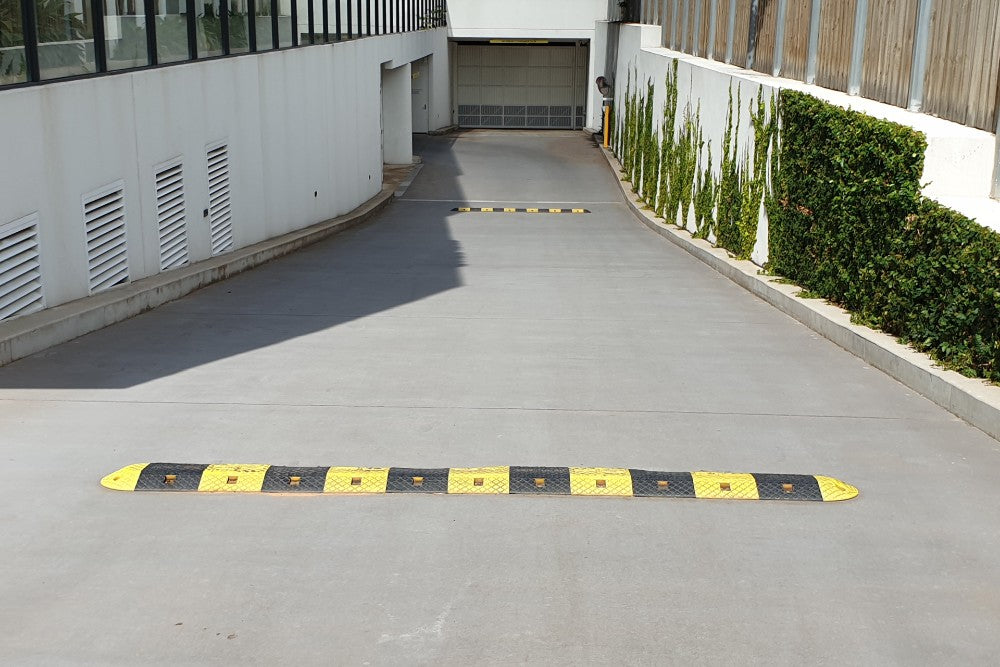A speed hump is a class of traffic calming devices, which uses various sizes of humps to slow vehicles through a designated area. They are designed to enforce a speed low speed limit, usually under 40km/h. While they have a range of benefits, they can be quite controversial. Speed humps with larger than average angles or height can cause problems to vehicles such as sports cards and motor bikes. Its essential speed humps are accompanied by clear traffic signs. However, the benefits and utility of such devices far outweigh a minority of motorists.
The benefits of speed hump
A Speed hump’s primary purpose is to protect pedestrians in areas where they are required to navigate across roads, car parks or similar. However, they’re also quite useful for:
- Reducing the risk of accidents
- Volume controlling motor traffic
- Creation of pedestrian awareness
- Regulating traffic
- Self-enforcing road rules
For more information, please read reasons ‘why speed humps are important.
What are speed humps made of
Speed humps are made with a variety of materials. The Enforcer Group stocks a range of these, which include:
We are committed to environmentally friendly manufacturing, using recycled materials wherever possible.
Where can speed humps be installed?
The best locations, are ones with high volumes of pedestrians, required to navigate across areas shared with motorists. Some common examples of locations where speed humps are popular include:
- Schools
- Hospitals
- Retirement villages
- Car parks
- Caravan parks
Want to learn more about the Enforcer Group?
We have a singular mission, to provide excellent products and services to all our clients, and forge long-term relationships. To achieve this, we relentlessly research and innovate the materials and processes involved in manufacturing car park and safety products.
A proudly Australian-owned business, our reputation for product excellence, quality, and customer service, has enabled us to supply major Australia’s companies, government utilities, councils, hospitals, universities, and airports.
You can learn more about us here or get in touch with us here.

